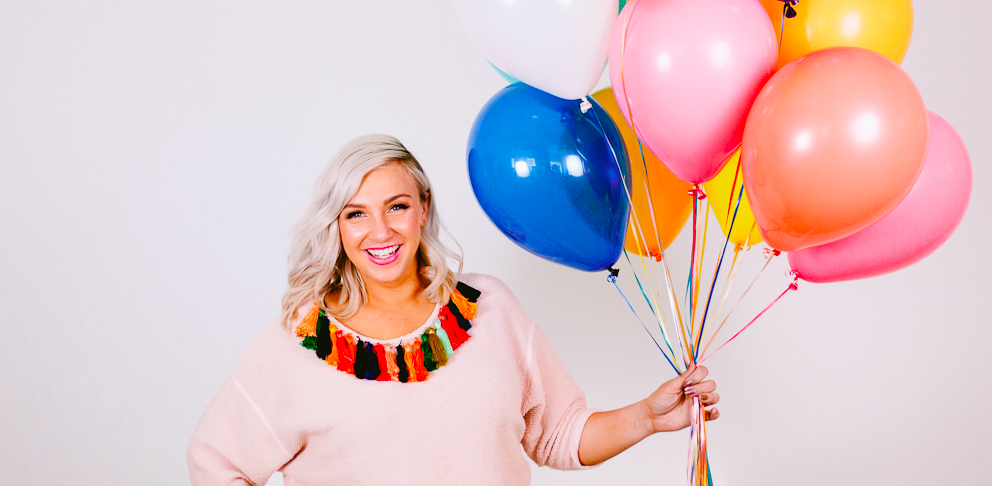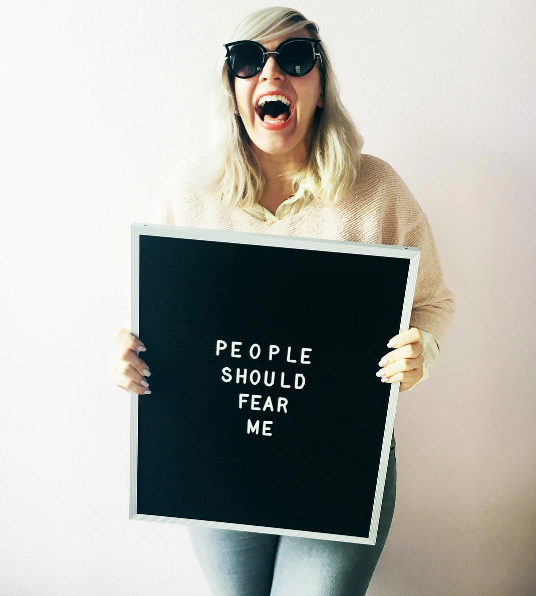Have you heard of The Alison Show? If you have, you probably love her. If not, check her out, and you will probably love her, too. It’s a little difficult to describe what Alison does. The Alison Show doesn’t just have 86,000 followers, she has dedicated fans. She is everyone’s best friend. She doesn’t sell products, but she does sell some tutorials and tickets to her awesome, all-women dance parties, where she is basically a celebrity. The tickets to these dance parties typically sell out within an hour of going on sale. Alison is a social media influence who inspires people and teaches them to be awesome. She actually has a video series called, “How To Be Awesome.”How did Alison build this empire, you may ask? Branding!
Starting Out
Alison Faulkner created the The Alison Show in 2007 with the goal or building a brand, and boy, has she. With a degree in advertising, a minor in English and graphic design, and experience writing in the alternative humor department for Hallmark, Alison is a master of Instagram. Alison had been working on her blog for a few years, doing DIYs and being crafty, but then Instagram came on the scene and changed everything. Though it was a new tool, Alison had a whole well of experience to draw from something very similar. As Alison said, “What is Instagram but writing captions to pictures? I literally have professional training in that. Instagram helped me refocus my brand and get a better picture of what was working with my brand. I had been blogging for like five years when Instagram happened, and then my brand resonated in a way my blog never had.” Alison quickly got attention as her social media accounts grew quickly.
Forming Goals
Though her Instagram account did grow at a fast rate, she had been building her audience for five years through her blog. She started as an essay blogger. As it goes for so many bloggers, her blog got too personal too quick, so Alison turned to crafts and DIYs—but then, there wasn’t enough personality. Instagram gave Alison the opportunity to feature her personality in a way that her blog couldn’t. Alison comments, “I realized that was what was resonating with people. That’s when I had to decide whats more important to me. What was my art?” As her brand grew, Alison recognized her direction. “My goal was to put more love into the world and to connect with people. I had the way that I wanted to do it, and there was the way that was working. I still do DIYs, but not to the extent that I saw myself doing them.”
Alison was a vendor at the first Craft Lake City DIY Festival. She sold homemade baby mobiles, baby mobile patterns, sewing patterns, and ombre socks. After participating in the event, Alison realized, “I’ve always been more interested in teaching and packaging content than selling the physical tangible good.”
From Hobby to Profession
“I’d say I shifted from hobby and just passion to trying to make it a source of income when my husband lost his job. Instead of taking another standard job, he started doing his music full time. He’s a music producer. Because I’d had the luxury of growing a brand for four or five years without the pressure of figuring out how to monetize it, I had options and opportunities. That was in 2012, when I became more serious about money.”
“Money is helpful and great, but it’s not my main motivator, ever. There are different things that motivate people, and at the end of the day, money doesn’t do it for me. It’s not the thing that gives me the greatest incentive. That was actually a really hard shift for me. You need money, and money can be validating. It comes down to what you want. Do you want to grow a business, or do you want to have a hobby, or do you wanna make some extra money? What size do you want that business to be? Do you want it to be scalable? The goal for me, from the start, was to create a brand.”
Creating a Brand
So, what does Alison do now? “My brand is, I share myself to help people feel better about themselves and to connect and to empower other people. I have my actual name in things and it’s ridiculous and hysterical. Whether they’re laughing with me or at me or in spite of me, at least they’re laughing! Maybe I’m sharing something they connect with, whether it’s art or a cookie or a party or a piece of writing, and so I use my personality. It’s very much a party of my brand. When I do my all-female dance parties, they’re not the gem jam, it’s Alison’s Gem Jam, and it’s not because I’m a horrible narcissist, I mean, maybe I am, but it’s because Alison is inviting you to the party and it’s my voice and my messaging. My personality is my unique value proposition and that is what has resonated.”
“Everyone is my best friend! That’s how I use my name to my brand’s advantage. It’s very much a part of my brand. Like my sugar cookies for example—I have my course, Alison’s Cookie Party. Instead of calling it just a sugar cookie course, it’s called Alison’s, because it’s like we’re hanging out! We’re learning, it’s a party, and it’s with me. We’re dancing, and we’re having fun! That’s what differentiates me from a professional pastry chef. Because who am I to have a sugar cookie course? But, I didn’t call it professional sugar cookie course. I called it Alison’s Cookie Party.”
Some Advice from Alison
“Not everybody has to be razzle dazzle time! You don’t have to make it about you! You just have to find what’s unique about you. What are your strengths? Why should people care about you any more than anyone else? What’s your unique value proposition? You don’t have to share everything, but people connect to vulnerability, and you’ve got to put yourself on the line. So when you’re an artist, you do that just naturally by sharing your art. As an artist, you are the product. People have the B.S. detecter, and when it’s not authentic, it doesn’t connect to people, or to as many people.”
“The trick is remembering that there’s Alison—the person—and there’s The Alison Show—the brand. And they’re not the same thing. So when I lose followers, The Alison Show is losing followers—it’s not Alison. But that’s hard because it is very personal, and it’s that art aspect of it. The parties, the caption, and the writings, that is my art. But ultimately, I always do what I want to do. If I don’t want to do it, then I don’t do it. You need to be smart with your unique value proposition. That’s just good branding. Your personality, yourself as an artist, use that to your advantage!”
Now, Go Find Your Brand!
Finding your brand can be tricky. Building it can be even trickier. Figure out what is unique about you, what’s connecting with people, and what motivates you. Use these things to set goals, and move forward from there! Things may not work out how you exactly think they will, but your work will pay off! You may not be The Alison Show, but that’s good, because we already have one of those. You build your thing. We don’t always see people’s backgrounds, what went into their success, or even what their success is, necessarily. We have a habit of just focusing on where they are now, and not where they started. Or maybe we think we know, but usually we don’t. It’ll be hard, but you can build your success, you can build your career, you can build your business. We are builders! Oh, and Alison thinks you’re awesome.
Organizational Support Provided By:




